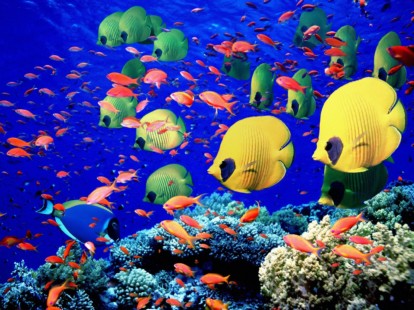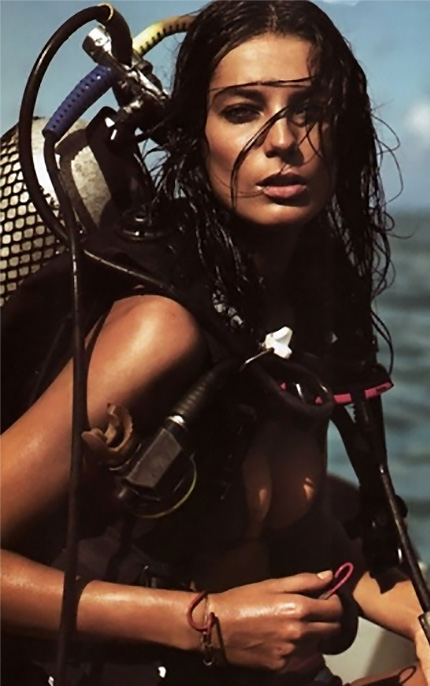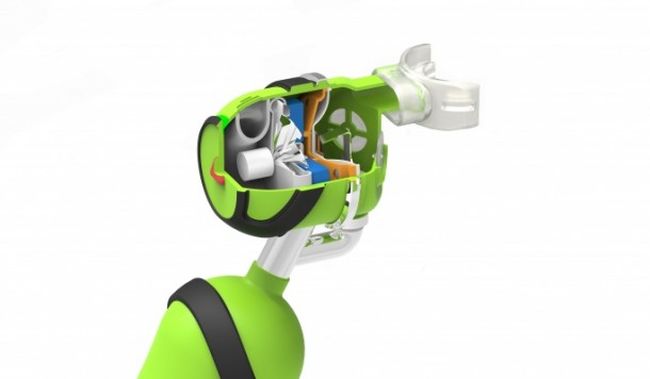Trying on a wetsuit certainly isn’t the most dignified experience, so you really want to make sure that you’re squeezing yourself into something suitable before you start overheating in the changing rooms. With racks upon racks of neoprene numbers adorning the walls of most dive shops, start by narrowing down your choices, using the following criteria…
Thickness – The most important factor when choosing wetsuit, the best way to determine what thickness you need is to decide where you’ll be doing most of your diving. If you make it a regular habit of submerging yourselves in English waters then you’re going to need a 7mm suit, whereas if it’s Maldives Diving that floats your boat, then opt for 3mm. A thinner suit will give you greater ease of movement underwater but there’s no point in being flexible if you’re too cold to move your toes.
Style – Even in summer, full wet suits (long arms and legs) are needed for diving in the UK. Shorties (short arms and legs), however, are best reserved for tropical waters, and is all you’ll need if diving in the Caribbean. But, as with most aspects of kit, style can also be a matter of preference; for example, whereas most people who’ve been on a Maldives Diving holiday will tell you that they spent a fortnight in a 3mm shorty, or even wearing just a pair of boardies, some will say they used a full-length 5mm. The final decision will really come down to how deep you plan to dive and how cold you tend to feel, as an individual.
Stitching – When examining a wetsuit for quality, look at the seams. Cheap wetsuit manufacturers tend to go for glued or over-lock stitch seams. These types of construction are fine if you require little more from a wetsuit than a bit of protection on a Maldives Diving trip, but will do a poor job of creating an effective seal and will easily wear out with continual use. For high quality suits, look for flatlock or blind stitching, with taped seams. Flatlock involves overlapping two pieces of neoprene before stitching, to make a waterproof join; and blind stitching (the most effective and expensive option), involves gluing and stitching the seams on both sides.
Material – All wetsuits are made of neoprene, but there are various different types and grades of neoprene, each holding different qualities and levels of comfort. At the top end of the scale is gas blown neoprene, which tends to be more supple and durable than chemically blown. Titanium lined suits will offer the most warmth and are typically around 20 per cent more efficient.
Personal preferences – There are some aspects that simply come down to a matter of preference, such as zips and colours. Zips can be placed either at the front, back or on the forearms of the suit and, whereas zip placement is really down to personal choice, many find back zips more comfortable and easy to get on and off easily. Colours are another consideration; apart from looking good underwater, the colour of a suit will help to identify you. If you’re buying a wetsuit for a child or partner and are concerned about losing them, opt for something bright!
Fit – You’re looking for a wetsuit that will minimise water-flow without reducing blood-flow. A quick way to check for the right size is to get someone to hold the wetsuit up to your back, and see if the arms, legs look like a potentially good fit. When you get to the trying on stage, you’re looking for a snug fit that doesn’t restrict your breathing or movement – remember that it will be much easier to move in your suit underwater. A loose suit will allow water to run through it and will therefore be largely ineffective at keeping you warm, so it’s especially important that your wrists and ankles feel snug but not overly tight. All body shapes vary, so you’ll be lucky if you find a perfect fit, but do check that there are no saggy bits around the arms and crotch, as these areas can rub and become uncomfortable.
Tags: Red Sea Liveaboards, Red Sea Live Aboards, Maldives Liveaboards, Maldives Live Aboards, Red Sea Diving, Maldives Diving, Egypt Diving, Egypt Dive



